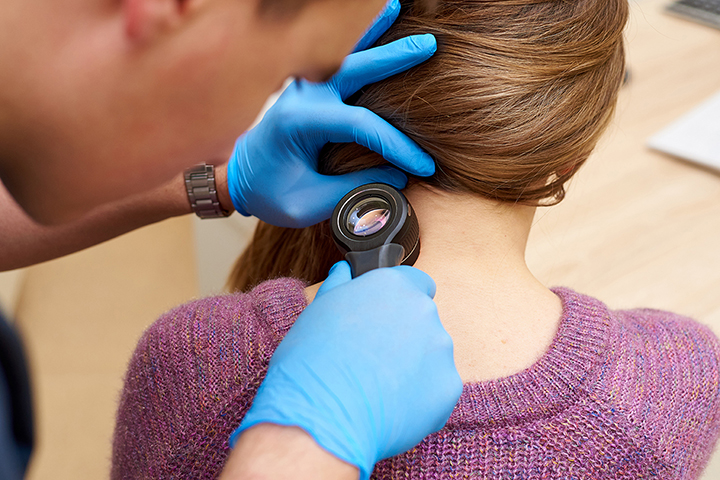- Chris Comans
- 14 Comments
Understanding the Different Types of Skin Cancer: A Guide for Perth Residents
Perth’s sun-kissed beaches and stunning outdoor lifestyle are a major drawcard for both locals and tourists. However, with this beautiful climate comes a significant responsibility: looking after our skin.
In Australia, skin cancer is a prevalent health concern, with one in two Australians diagnosed with skin cancer by the age of 70. For residents of Perth, where the sun shines brightly for most of the year, understanding the different types of skin cancer is crucial for prevention, early detection, and effective treatment.
The Skin Cancer Landscape in Perth & Western Australia
Before diving into the specifics, it’s important to understand what skin cancer is. Skin cancer occurs when skin cells grow uncontrollably, usually due to damage from ultraviolet (UV) radiation. In Western Australia and specially Perth, the UV index can reach extreme levels, making skin protection an essential part of daily life.
Types of Skin Cancer
There are three primary types of skin cancer: basal cell carcinoma (BCC), squamous cell carcinoma (SCC), and melanoma. Each type varies in terms of appearance, severity, and treatment options.
1. Basal Cell Carcinoma (BCC)
BCC is the most common form of skin cancer in Australia, accounting for approximately 75% of all skin cancer cases. It originates in the basal cells, which are located in the outer layer of the skin. BCC typically appears as:
- A small, pearly bump on the face, ears, or neck.
- A flat, scaly patch on the back or chest.
- A sore that doesn’t heal.
While BCC is rarely life-threatening, it can invade surrounding tissues if left untreated. Early detection and treatment are crucial, so if you notice any unusual changes in your skin, consult a qualified skin cancer screening practitioner in Perth.
2. Squamous Cell Carcinoma (SCC)
SCC is the second most common type of skin cancer in Australia. It arises from the squamous cells, which form the outer layer of the skin. This type of skin cancer often appears as:
- A firm, red nodule.
- A flat lesion with a scaly, crusted surface.
- A sore that bleeds or doesn’t heal.
SCC is more aggressive than BCC and can spread to other parts of the body if not treated promptly. Therefore, it’s essential for Perth residents to keep an eye on any changes to their skin and seek professional advice from qualified practitioners.
3. Melanoma
Melanoma is the most serious form of skin cancer, accounting for a smaller percentage of cases but causing the majority of skin cancer deaths. It develops in the melanocytes, the cells responsible for producing melanin, which gives skin its colour. Melanoma can appear as:
- A new mole or growth on the skin.
- An existing mole that changes in size, shape, or colour.
- A dark, irregularly shaped spot.
Melanoma is particularly dangerous because it can spread quickly to other parts of the body. Early detection is crucial for increasing the chances of successful treatment. Perth residents should be vigilant about monitoring their skin and consult qualified skin cancer screening practitioners if they notice any suspicious changes.
Risk Factors
Understanding the risk factors associated with each type of skin cancer can help residents of Perth take preventative measures. Some common risk factors include:
- UV Exposure: Prolonged exposure to the sun, especially during peak hours, significantly increases the risk of developing skin cancer. Western Australians are encouraged to practice sun safety by seeking shade, wearing protective clothing, and using sunscreen with a high SPF.
- Skin Type: Fair-skinned individuals are at a higher risk of developing skin cancer due to lower levels of melanin, which provides some protection against UV radiation.
- Family History: A family history of skin cancer can elevate an individual’s risk, making regular skin checks even more critical.
- Age: The risk of skin cancer increases with age, particularly for individuals over 50.
Prevention and Early Detection
The best way to combat skin cancer is through prevention and early detection. Residents of Perth should engage in regular skin checks—both self-examinations and professional screenings by qualified practitioners. Look for any changes in existing moles or the appearance of new growths.
Additionally, adopting sun safety practices is vital:
- Slip, Slop, Slap: Slip on a shirt, slop on sunscreen, and slap on a hat.
- Seek Shade: Whenever possible, stay out of direct sunlight, especially during peak UV times (10 am to 4 pm).
- Regular Screenings: Schedule annual skin checks with qualified skin cancer screening practitioners to catch any issues early.
Conclusion
Understanding the different types of skin cancer is imperative for residents of Perth, where the sun shines bright and the risks are high. By staying informed about the signs and symptoms of BCC, SCC, and melanoma, and by practising sun safety, you can significantly reduce your risk of skin cancer. Remember, early detection is key, so make it a priority to consult with qualified skin cancer screening practitioners like skinchx.com.au regularly. Your skin will thank you for it!


Why Annual Skin Checks Are a Must for Outdoor Enthusiasts in Western Australia - SkinChx
AI in Total Body Photography for Monitoring High Mole Counts
How to Tell If a Skin Spot Is Dangerous: Expert Advice from Skin ChX - SkinChx
Children and Skin Cancer: Teaching Sun Safety from a Young Age - SkinChx
Understanding Childhood Melanoma in Australia: The Facts - SkinChx
The Real Causes of Skin Cancer: What You Need to Know - SkinChx
The Real Causes of Skin Cancer: Key Facts You Must Know
Spotlight on Skin Cancer: Why Your Nose Deserves Special Attention - SkinChx
Skin Cancer on Nose: Symptoms, Diagnosis & Treatment Options
The Bottom Lip: A High-Risk Site for Skin Cancer in WA - SkinChx
Bottom Lip Skin Cancer: Why WA Faces Higher Risk
Skin Cancer on Ears: Hidden Danger in WA
Diagnostic Algorithms for Melanoma on the Palms: A Dermoscopy Perspective - SkinChx
Melanoma on Palms: Dermoscopy Algorithms & Diagnosis Guide